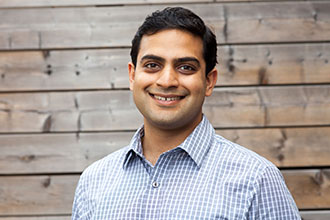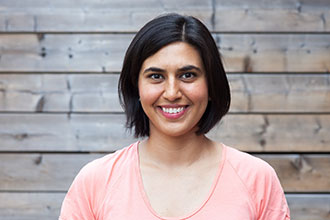Poor sleep, missed meals, less mobility and stress in hospital may lead to readmission

By Ana Gajic

Dr. Amol Verma
Patients who experience disturbances in sleep, mobility, nutrition or mood while admitted in hospital may be more likely to be readmitted within 30 days after discharge, finds a new study co-led by St. Michael’s Hospital and the University Health Network (UHN). The research was published Monday by the Journal of the American Medical Association.
This research builds on a growing body of evidence suggesting that patient experience in hospital may be associated with post-hospital outcomes and the risk of readmission. The study found that nearly all 207 patients who participated in the study reported disturbance in at least one category in hospital. Sixty-five per cent of patients reported disturbance in more than one category and about 30 per cent reported disturbances in three or four categories. Those with disturbance in three or four categories were classified as patients with “high trauma of hospitalization” and had a 16 per cent higher risk of readmission to hospital after discharge.
“Everyone who works at a hospital knows intuitively that the disruptive hospital environment has a profound impact on patients, but with this research, we have a clearer picture of the scale of the problem and we now know that it could affect patient outcomes,” said Dr. Amol Verma, a physician at St. Michael’s who co-led the study and co-founded the data platform GEMINI.
Researchers studied participants from two large, urban, academic hospitals, St. Michael’s and the Toronto Western Hospital of UHN, who were admitted to the internal medicine ward for more than 48 hours. They interviewed participants using a questionnaire before discharge to gauge their disturbance in-hospital in the four categories: sleep, mobility, nutrition and mood.
The data platform GEMINI, which collects information related to hospital stay, such as lab results, initial diagnosis, etc., was used to show that the patients with higher disturbance rates were not sicker than those with low disturbance rates.
“This study pointed out three major things we didn’t know previously,” said Dr. Verma. “First, we didn’t know how common and connected these disturbances were. Second, we learned that patient experience is linked to patient outcomes and the cumulative effect for disturbances has more impact than disturbance in only one domain. Third, this study suggests that we might be able to improve patient experience and outcomes at the same time.”
The questionnaire used in the research was based on existing evaluation tools. It measured the quality of the patients’ sleep through a series of questions related to falling asleep and feeling restful and refreshed after sleep. It evaluated mobility based on how active the patients perceived themselves to be during their hospital stay. Nutrition was measured based on whether the patients’ meals were disturbed, interrupted or missed. Patients’ moods were based on self-evaluations of feelings of anxiety or depression at time of discharge. The most common disturbances were in mobility and nutrition.

Dr. Shail Rawal
“This study gives us a snapshot of different dimensions related to being in hospital and how they can affect recovery,” said Dr. Shail Rawal, a physician at Toronto Western Hospital and lead author of the study.
“The results suggest that enhancing our patient-centred healing environment through initiatives that address these issues may go a long way in improving care. And there are gains that can be made without much pain,” said Dr. Rawal.
As an example, changes such as minimizing alarms at night, offering ear plugs and eye masks for patients may help improve sleep quality in hospital. Initiatives to get patients out of their beds and making food more accessible could also help with mobility and nutrition. According to Dr. Rawal, these are simple interventions that are being considered to improve the experience of hospitalization and also lower the risk of readmission.
She highlighted, however, that this is an observational study, and that further studies in different centres should be done to validate the results. The questions had not been evaluated in this setting before, and the disturbance evaluation was based on patients’ own memories of their stay which had a potential to be biased based on their current health status.
Dr. Rawal and Dr. Verma, along with their teams, are now working with colleagues in other cities to validate their findings. They are also in the process of developing potential solutions to improve hospital experience.
“The next thing is to try to re-design hospital care to try to improve people’s sleep, nutrition, mobility, and mood without losing efficiency,” Dr. Verma said. “Our plan is to try and work with a group of patients, frontline health-care providers and everyone else who participates in a patient’s care, like hospital meal staff, to co-design an intervention to improve the experience of care in hospital.”
About St. Michael’s Hospital
St. Michael’s Hospital provides compassionate care to all who enter its doors. The hospital also provides outstanding medical education to future health care professionals in more than 29 academic disciplines. Critical care and trauma, heart disease, neurosurgery, diabetes, cancer care, care of the homeless and global health are among the Hospital’s recognized areas of expertise. Through the Keenan Research Centre and the Li Ka Shing International Healthcare Education Centre, which make up the Li Ka Shing Knowledge Institute, research and education at St. Michael’s Hospital are recognized and make an impact around the world. Founded in 1892, the hospital is fully affiliated with the University of Toronto.
St. Michael’s Hospital with Providence Healthcare and St. Joseph’s Health Centre now operate under one corporate entity as of August 1, 2017. United, the three organizations serve patients, residents and clients across the full spectrum of care, spanning primary care, secondary community care, tertiary and quaternary care services to post-acute through rehabilitation, palliative care and long-term care, while investing in world-class research and education.
